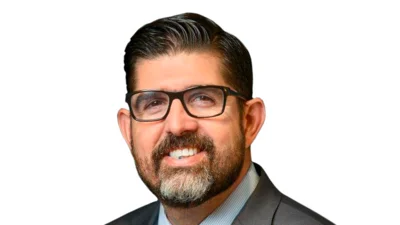Dr. Matthew Blair, otolaryngologist | Gulf Coast Breathe Free Sinus & Allergy Centers
Dr. Matthew Blair, otolaryngologist | Gulf Coast Breathe Free Sinus & Allergy Centers
• Mouth breathing can lead to dental issues, including gingivitis and cavity development.
• As many as 60% of adults breathe through their mouth.
• Procedures such as a balloon sinuplasty or endoscopy can help a patient to breathe better through their nose.
Dr. Matthew Blair, a board-certified otolaryngologist at Gulf Coast Breathe Free Sinus & Allergy Centers, says the ability to breathe freely and easily through your nose can lead to a better, healthier life.
"Nasal obstruction, chronic sinusitis or chronic allergies really affect one's quality of life," Blair told West Florida News. "If you have a poor outlook on life, because you're always suffering from allergies or sinusitis, it's going to affect the rest of your general health. So if you can get your breathing improved, you can get your nose in tiptop shape, you're gonna feel better, you'll want to do more things and you're going to overall improve your quality of health."
A heavy reliance on the mouth for breathing and the inability to easily breathe through the nose can create a number of health-related challenges. For example, breathing primarily through the mouth can dry it out and can create an environment that is prime for dental issues such as gingivitis, cavities or even bad breath, according to Healthline. The nose naturally acts as a filter to trap bacteria and dust, plus nasal breathing increases oxygen intake and boosts brain activity. It also helps slow the airflow, which leads to a feeling of calm. Mouth breathing can also lead to a strained jaw joints, snoring, sleep apnea, enlarged tonsils and a higher risk for airway disorders, such as asthma.
According to WebMD, there are several treatment options for chronic sinus issues, including endoscopy and balloon sinuplasty, procedures offered at Gulf Coast Breathe Free Sinus & Allergy Centers. During an endoscopy, doctors insert an endoscope into the nose. One instrument has a small camera lens that sends images back to a screen, allowing the doctor to see and remove blockages.
A newer treatment is balloon sinuplasty, where a doctor inserts a thin tube into the nose with a small balloon attached to one end and inflates it. The balloon helps clear the sinus passageway to alleviate congestion.
To learn more about the symptoms of sinusitis and allergies, take this Sinus Self-Assessment Quiz.




 Alerts Sign-up
Alerts Sign-up